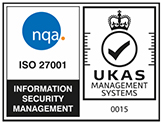You may be aware that there are a number of ways to close wounds.
These include:
- Skin staples
- Stitches (also called sutures)
- Strips of paper with small grips to bring the wound together (e.g. steristrips)
- Specialised glue
- Gunpowder from a bullet (okay I made this one up – though I remember that Sylvester Stallone used some to cauterise a deep wound when playing John Rambo in the film ‘First Blood’).
This article will look at the use of specialised glues, which tend to be useful in helping to prevent infection and are cost effective.
There are variety of glues that can be used to bring the margins of a wound together and make them adhere until such time as the underlying tissues can heal and reform.
Glue can also be used in association with other forms of closing a wound, e.g. they are sometimes used with steristrips.
Glue does not tend to be used for wounds with irregular margins, for deep wounds that go into the tissues below the skin, wounds that continue to bleed or that are dirty or infected, or caused by an animal bite. They cannot be used to close an ulcer either.
They tend to be used more in children than adults, but can be equally effective in the two groups – it’s just that more children tend to have minor injuries than adults.
Common sites to use glue include:
- The face and head (but not if the wound goes through the eyebrow)
- Arms and legs, or trunk
I know from a friend who regularly surfs that glue was very useful in treating a cut to his leg, which he sustained when surfing over a coral reef. Especially as the nearest clinic/hospital was some distance away.
However, there are also places which are not appropriate for glue to be used:
Areas such as the lips, inside the mouth, over areas where there is tension in the skin (e.g. over joints such as the knuckles as the skin may break open due to repeated changes in the tension of the affected skin). Other areas include where tissues can rub together, e.g. the perineum, or buttocks, and moist areas such as the armpit where the glue may not adequately bind the tissues together.
A main consideration has to be the resulting appearance when the clinician is thinking about using glue. With sutures there may be scars from where the needle and stitch entered and exited the skin. This is not seen with the use of glue, although there may be a fine linear scar.
Wounds that run along in parallel with the bundles of collagen under our skin (known as Langer’s Lines) usually give a better result. Wounds that traverse Langer’s lines tend to scar and be more unsightly. Examples of Langer’s lines can be seen when you look into the mirror and scowl! The furrows on your forehead show the Langer’s Lines in this location. They are present all over the body.
The process
When the bleeding has stopped and the wound has been cleaned, the glue can be applied to the wound margins as they are brought together. The margins should be kept firmly opposed to one another for a few minutes at least to let the glue solidify. Particularly in children or confused people, there is a time when it is important that the medical staff try to ensure that the patient’s hands are kept away from the wound until it sets. There are plenty of cases of fingers etc. being stuck to the wound as a result of a stray hand making its way to the glue!
Care must be taken that the glue does not run, e.g. for a cut on the forehead, glue must not be allowed to run down towards the eyes. The glue usually comes in a small tube that makes the administration of large quantities difficult to do for even the clumsiest! The process should be performed under sterile conditions to minimise the risk of infection (as the wound should have been cleaned already, removing any dirt or debris in the wound).
The application of the glue itself is painless, but children, especially if non-verbal, may need reassurance for the gluing to be carried out. It does usually only take a few minutes to do rather than suturing which can take much, much longer and often needs the administration of local anaesthetic to numb the area.
Guidance varies about the size of the wound that can be glued with satisfactory cosmetic results. Some authorities recommend glue can be used for wounds up to 4cm whilst others have stated that 10cm should be the maximum length. This should be within 12 hours of the injury as otherwise there will be a high risk of failure; wounds that have been glued do have a slightly higher rate of breakdown (4% breakdown) than wounds which are sutured (2% breakdown).
Potential areas of medical negligence
- The wound was not cleaned properly – this could give rise to infection of the wound, breakdown of the glue adhesion with a bigger scar being formed as part of the body’s healing processes
- Glue getting into the wrong places! E.g. the nurse’s fingers being superglued to the child’s forehead
- Unsightly result which could have been predicted – as mentioned the size of the wound and its location in relation to Langer’s Lines are important considerations about the use of glue or other modes of skin closure
If you want further information about this particular topic, or wish to discuss the possibility of bringing a claim for Clinical Negligence - or indeed any other type of injury, please contact the Dutton Gregory Clinical Negligence Team on (01202) 315005, or email k.marden@duttongregory.co.uk






